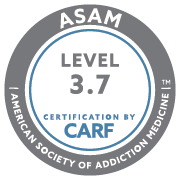Did you know that 2% of the population suffers from Obsessive-compulsive disorder also known as, ‘OCD’? It is categorized as a mental disorder where people feel the need to check things repeatedly, perform certain routines repeatedly (called “rituals”), or have certain thoughts repeatedly. Unfortunately, the disorder permits people from being able to control their thoughts or the activities for more than a short period of time. Common activities include hand washing, counting of things, and checking to see if a door is locked. Some may have difficulty throwing things out. These activities occur to such a degree that the person’s daily life is negatively affected. According to The Journal of Anxiety Disorders, over 25% of those who seek treatment for OCD also meet the criteria for a substance use disorder. For men and women who suffer from concurrent diagnoses of substance use disorder and OCD, addressing the emotional symptoms of OCD is necessary for treatment to be effective.
Oftentimes, people deem that those who suffer from OCD are typically overly concerned about organization or cleanliness, however, the disorder causes real anxiety and fear. OCD sufferers can’t ‘control their behaviors and don’t feel pleasure doing them’ according to the National Institute of Mental Health. It’s also not always about germs or organization. People with OCD have a fear that something is going to go wrong thus, they will repeatedly check on things, like seeing if the door is locked or that the oven is off. This will lead the sufferer to count things or activities. They may also experience tics such as eye blinking, shoulder shrugging or throat clearing.

Just because people don’t see a mental illness, doesn’t mean it’s not there
Amanda Seyfried knows all too well what it’s like to live with the intrusive thoughts of obsessive-compulsive disorder. When the “Mamma Mia!” and “Les Misérables” star bought a house near the Catskill Mountains, she made sure there would be no stove because she was too worried about the possibility of it being left on and starting a fire. These are some of the fearful and repeated thoughts that run wild through her brain.
New Directions for Women would like to say thank you to Amanda for being so honest to her fans as oftentimes, mental illness is seen as something to be feared. The stigma around mental illness is unsettling but the more that we have individuals share their stories, the more people will be accepting of it. More than half of all people with a mental illness also suffer from chemical dependency. This classifies them as a dual diagnosis patient and requires a specialized facility for treatment. New Directions for Women’s treats those who have a dual-diagnosis disorder. We understand that chemical dependency is coupled with co-occurring disorders. Our multidisciplinary treatment team is comprised of Master’s Level Licensed Therapists and Certified Addiction Counselors who are passionate about providing comprehensive, individualized residential rehab and intensive outpatient addiction treatment.
Our caring admissions counselors are available 24/7 to take your call and answer any questions you may have on getting help. Reach us by phone at .












